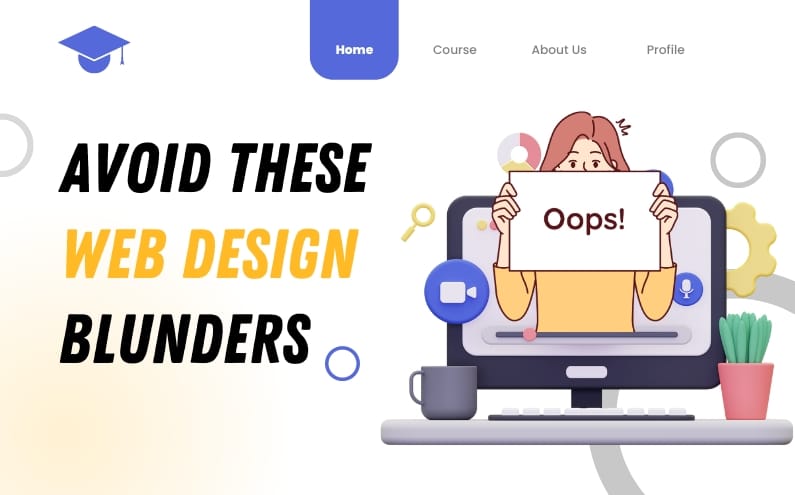Poor Navigation
One of the cardinal sins of web design is having a confusing or cluttered navigation menu. Users should be able to navigate your site effortlessly, finding what they need without getting lost. Ensure your navigation is intuitive, with clear labels and organized categories. Avoid overcrowding the menu with too many options, as it can overwhelm visitors and drive them away.
Slow Loading Times
In today’s fast-paced world, users expect websites to load within seconds. If your site takes too long to load, visitors are likely to abandon it and seek alternatives. Improve your website’s speed by making images smaller, reducing the size of your code, and using caching tricks. Also, consider getting a good web hosting service to make your site load faster.
Lack of Mobile Responsiveness
With the increasing use of smartphones and tablets, having a mobile-responsive website is non-negotiable. If your website isn’t made to work well on phones and tablets, people might not like using it. This can make them leave your site quickly and might even make it show up lower in search results. So, it’s important to make sure your website looks good and works properly no matter what device someone is using, whether it’s a computer, phone, or tablet.
Cluttered Design
A cluttered website overwhelms visitors and detracts from the content’s message. Avoid cramming too much information onto a single page, and instead focus on clean, minimalist design principles. Use ample white space to give elements room to breathe, and prioritize clarity and simplicity in your layout. Remember, less is often more when it comes to effective web design.
Unreadable Text
Text is a fundamental element of web design, and it’s essential to ensure that it’s easily readable. Avoid using small font sizes or overly decorative fonts that are difficult to decipher. Stick to clear, legible typefaces and maintain an appropriate contrast between text and background colors. Additionally, break up large blocks of text into smaller paragraphs and use headings and bullet points to improve readability.
Neglecting SEO Guidelines
SEO, or search engine optimization, is super important for getting people to find your website through search engines. If you ignore SEO tips, your site might end up way down in the search results, making it hard for folks to discover. Make sure you use the right keywords, write clear descriptions for images, and organize your site logically. Also, keep your content fresh and link to other pages to boost your site’s SEO.
Overuse of Pop-Ups
While pop-ups can be effective for capturing leads or promoting special offers, overusing them can annoy visitors and drive them away. Avoid bombarding users with pop-ups as soon as they land on your site, and ensure any pop-ups are easy to dismiss. Consider using exit-intent pop-ups or timing-based triggers to display them strategically, without interrupting the user experience.
Auto-Playing Multimedia
Auto-playing videos or audio can be disruptive and frustrating for users, especially if they’re browsing your site in a quiet environment. Allow users to control multimedia content themselves by providing play buttons and volume controls. If you must include auto-playing media, ensure it enhances the user experience rather than detracting from it.
Inconsistent Branding
Your website should reflect your brand identity consistently across all pages. Inconsistencies in branding, such as using different colors, fonts, or messaging, can confuse visitors and weaken your brand’s credibility. Develop brand guidelines that dictate the use of logos, colors, and typography, and ensure all elements align with your brand’s image and values.
Ignoring Accessibility
Accessibility is a crucial but often overlooked aspect of web design. Failure to make your website accessible to users with disabilities can alienate a significant portion of your audience. Ensure your site is compliant with accessibility standards such as the Web Content Accessibility Guidelines (WCAG), with features like alternative text for images, keyboard navigation support, and properly structured HTML markup

